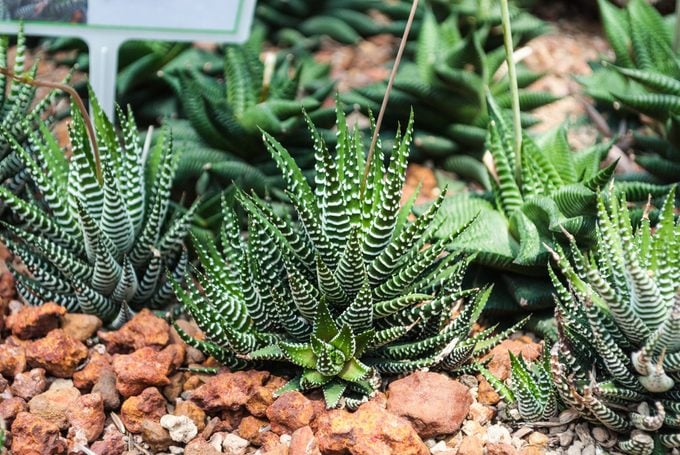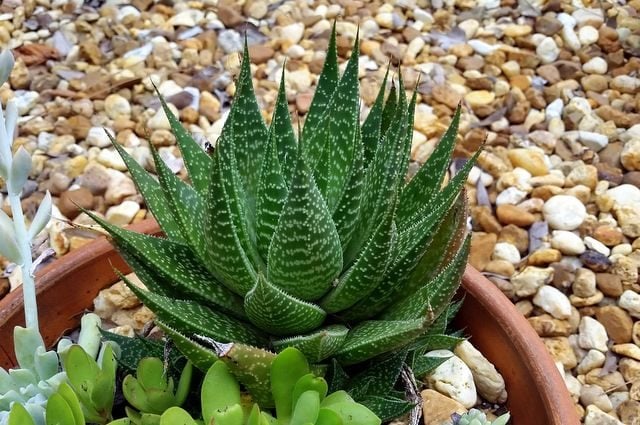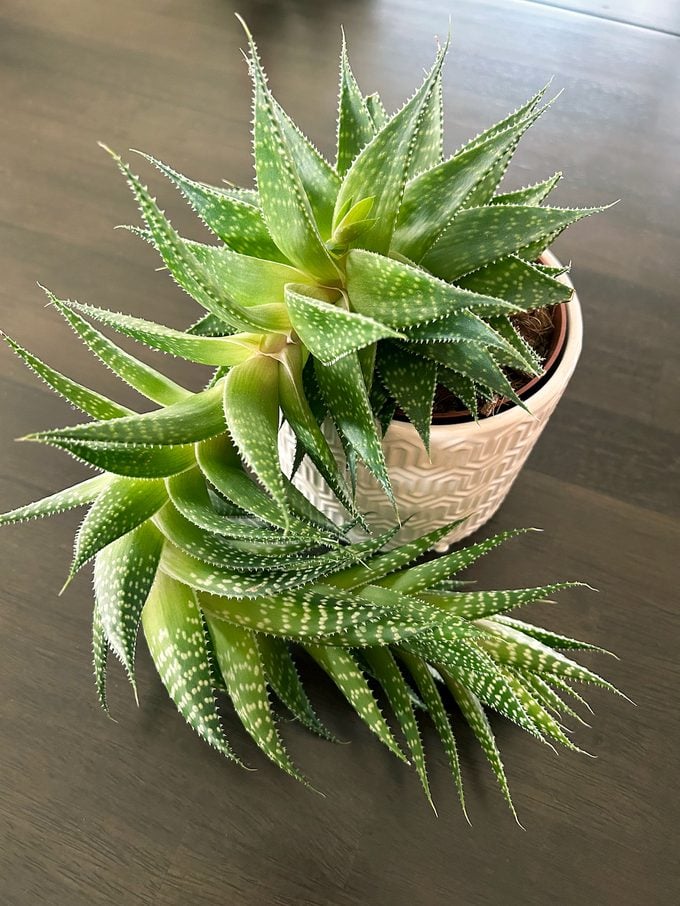Add Haworthia, or Zebra Plant, to Your Succulent Collection
Updated: Nov. 08, 2023
One of the easiest indoor plants to grow and care for, haworthia succulents (also called zebra plants) boast spiked foliage with green and white stripes.
On This Page
Haworthia Succulent Care

Succulents are all the rage these days, and it’s easy to see why. These indoor plants are unique and fun to grow, and lend themselves well to a variety of settings and containers. A haworthia succulent is one of my personal favorites, since it’s easy to care for and fascinating.
It’s easy to guess why haworthia is sometimes referred to as the zebra plant—the white, stripey bumps along its leaves make it stand out in a crowd. Not only is this houseplant eye-catching, it also withstands nearly any abuse thrown at it.
These slow-growing plants are native to southern Africa, but they make excellent houseplants the world over. There aren’t too many problems to look out for with a haworthia succulent. As long as the soil is well drained and you monitor the sun exposure, you should find this an almost foolproof plant. Here’s how to grow and care for a haworthia succulent.
Also check out the top 10 flashy flowering succulents to grow.
Light Needs

Most types of haworthia succulents varieties prefer bright, indirect light from a south-facing window, but some adapt well to direct sunlight or low light. Some types change color to red or purple when exposed to sun. If the leaves turn pale, the plant may be getting too much sun.
We found succulents that will attract pollinators.
Watering
Haworthias are succulents and have the ability to survive long periods without water. However, your plants will be much happier with regular waterings, as long as you let the soil dry out between watering. During the cooler winter months, you can water less frequently. At all times, make sure your soil is well-drained so the roots don’t sit in water for extended periods of time.
Learn how to propagate succulents (for more free plants!)
Temperature
Hot temperatures are fine for haworthia succulents in the summer months. You can even move them outdoors if you like. They can stand temperatures down to about 50 degrees F. However, in most areas, you’ll need to grow them indoors in the winter. In areas without freezing winters, grow them outdoors year-round but protect your plants from sudden dips into the 40s or below.
Psst—here’s what I wish I knew before planting a succulent garden.
Haworthia Succulent History
Haworthia has a long history. According to the University of Wisconsin-Madison Department of Extension, it was first referenced in writing in the early 1600s when European explorers brought haworthia back from southern Africa.
Ask The Experts: Haworthia Succulent Troubleshooting

“I received this succulent as a gift several years ago and let it grow out of control. What should I do?” Birds & Blooms field editor Judy Roberts.
Horticultural expert Melinda Myers says, “You were gifted a haworthia and, as a succulent, it needs a minimum of four to six hours of bright light each day to promote compact growth. When there is insufficient light, the plants will stretch out and grow toward the light source.
You can ‘deconstruct’ this current plant and use the leaves and leaf stem to start new, more compact plants. First, cut off everything on the haworthia that is above one or two layers of leaves at the soil’s surface. New plants will form either above the leaves left on the stem or from the stem itself.
Next, divide the cut-off stem into two sections, separating the curved part from the straight part. Carefully remove leaves from the curved portion, then compost this curved part of the stem. Use the removed leaves to start new plants by setting them on a plate or piece of cardboard that is out of direct sunlight. This allows them to callous.
After several days, you can lay those leaves on the surface of a succulent mix in individual containers or one shallow container. The leaves will form roots in several weeks, and small plants will appear in several months.
Finally, remove the lowest leaves from the straight, cut-off stem portion. Let this callous over, like the leaves, for several days. Once callused over, pot this stem cutting in a small container of succulent potting mix. Bury the stem so the lowest layer of leaves sit just above the soil surface. Once rooted, make sure all your new plants receive sufficient sunlight, or place them under artificial lights to encourage more compact growth in the future.”
Add color with these pretty pink succulents for your home
